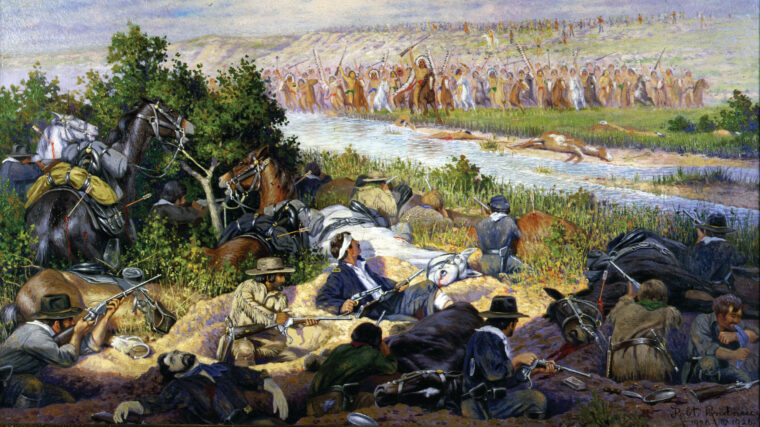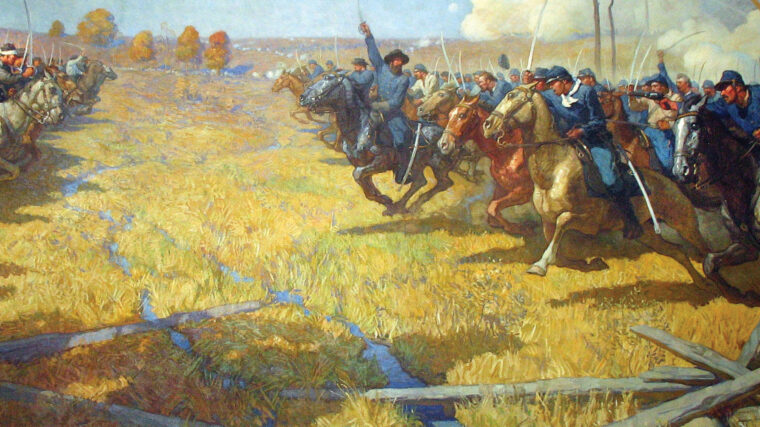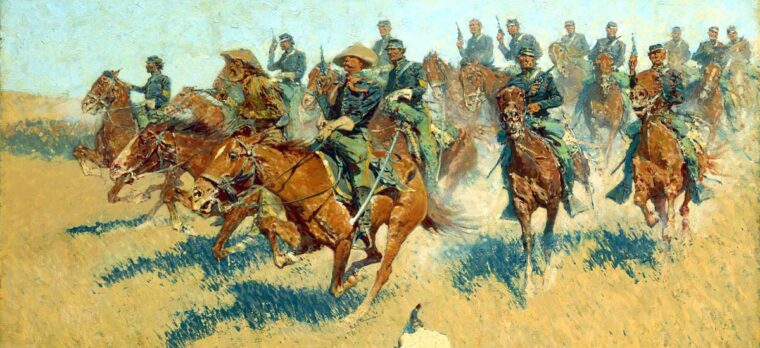
Cheyenne Tribe
Rosebud Creek
By Eric NiderostAround 8 o’clock on the morning of June 17, 1876, Brig. Gen. George Crook ordered his troops to halt along the banks of Rosebud Creek. Read more

Cheyenne Tribe
Around 8 o’clock on the morning of June 17, 1876, Brig. Gen. George Crook ordered his troops to halt along the banks of Rosebud Creek. Read more

Cheyenne Tribe
In the 1780s the Founding Fathers of the United States didn’t so much revise the old Articles of Confederation as devise an entirely new government as set forth in the Constitution. Read more

Cheyenne Tribe
The affection that Europeans have for the Great American West is well known, so it shouldn’t be surprising that several traveling Wild West Shows happened to be in enemy territory when World War I broke out. Read more

Cheyenne Tribe
Richard Gatling was born in Hertford County, NC, on December 12, 1818. His father was a prosperous farmer and inventor, and the son was destined to inherit the “invention bug.” Read more

Cheyenne Tribe
We can never know what frantic thoughts raced through George Armstrong Custer’s mind in the last hour of his life. Read more

Cheyenne Tribe
“Indians! Indians!” The staple warning from countless cliché-ridden dime novels was all too real at dawn of a Colorado morning in 1868. Read more

Cheyenne Tribe
Under a bright, high sun in a pale blue Midwestern sky, six companies of the United States Cavalry’s 1st Regiment rode into a grassy valley bordering the south fork of the Solomon River in northwestern Kansas on the afternoon of July 29, 1857. Read more

Cheyenne Tribe
The conclusion of the Civil War saw the painfully reunited nation resume its westward surge. Complicating that surge was the Indian question: how best to remove the Native American peoples from the paths of white expansion. Read more

Cheyenne Tribe
The young captain of engineers who discovered the dangerous bulge in the “Mule Shoe” salient at Spotsylvania, Ranald Slidell Mackenzie, would go on to make a name for himself during the Civil War and the subsequent Indian campaigns out West. Read more

Cheyenne Tribe
On an early autumn day along Snake Creek in the Montana Territory Nez Perce children played with sticks and mud balls. Read more

Cheyenne Tribe
Tall, handsome, and ramrod-straight Winfield Scott Hancock perfectly embodied his flattering nickname, “Hancock the Superb.” His performance on Civil War battlefields from Antietam to Gettysburg underscored that sobriquet. Read more

Cheyenne Tribe
Major John M. Chivington, Colorado’s “fighting parson,” played a large role in the Union victory at Glorieta Pass, New Mexico, in 1862. Read more

Cheyenne Tribe
John M. Chivington was a prominent military commander during the American Civil War in the West. Initially an ordained Methodist Minister, Chivington would abuse his position as a military commander, leading the federal government to condemn his actions as an officer of the United States Military. Read more